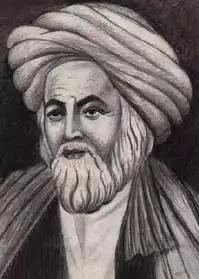Name Abu al-Zamakhshari Died 1143, Gorgan, Iran | ||
 | ||
Parents Omar bin Muhammad Al-Zamakhshari | ||
Tafsir al kashaf of al zamakhshari shaykh akram nadwi al salam institute
Abu al-Qasim Mahmud ibn Umar al-Zamakhshari, known widely as al-Zamakhshari (in Persian: محمود زمخشری), also called Jar Allah (Arabic for "God's neighbour") (18 March 1075 – 12 June 1144), was a medieval Muslim scholar of Persian origin, who subscribed to the Muʿtazilite theological doctrine, who was born in Khwarezmia, but lived most of his life in Bukhara, Samarkand, and Baghdad. He was a great authority on the Arabic language as well as a rationalist theologian.
Contents
- Tafsir al kashaf of al zamakhshari shaykh akram nadwi al salam institute
- Biography
- Death
- Works
- Zamakhshari and the Khwaresmian language
- References
Biography
Al-Zamakhshari was born in Zamakhshar, Khwarezmia, on Wednesday 27 Rajab, 467 AH/ 18 March, 1075 AD. He became a renowned scholar of the Mutazilite school of Islam. He used Persian for some of his work, although he was a strong supporter of the Arabic language as well as an opponent of the Shu'ubiyya movement. After losing one of his feet to frostbite, he carried a notarized declaration that his foot was missing due to accident, rather than a legal amputation for any crime.
He is best known for Al-Kashshaaf, a seminal commentary on the Qur'an. The commentary is famous for its deep linguistic analysis of the verses, however has been criticised for the inclusion of Mu'tazilite philosophical views.
For many years he stayed in Mecca, for which he became known as Jar-Allah ("God's neighbour"). He later returned to Khwarezm, where he died in 1144 at the capital Gorgan (in the present Gulestan Province, Iran).
He studied at Bukhara and Samarkand while enjoying the fellowship of jurists of Baghdad.
Death
Al-Zamakhshari died in the Monday night of 8th Zulhijja, 538 AH/ 12 June, 1144 AD.
Works
Zamakhshari's fame as a commentator rests upon his commentary on the Qur'an. In spite of its Mu'tazili theology it was famous among scholars.
Works include:
Zamakhshari and the Khwaresmian language
The greater part of the surviving vocabulary of the now extinct Iranian Kwaresmian or Chorasmian language is found in the form of interlinear glosses throughout a single manuscript (of ca. 596/1200) of Zamakhshari's Arabic-Persian dictionary, the Muqaddimat al-adab (Zamakhshari may himself have been a native speaker). Some other manuscripts of this work also contain a few such glosses. Thus the Muqaddimat al-adab is a very important primary source for the study of this extinct language.
